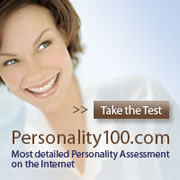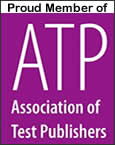By Beau Johnson, Tests.com Contributing Writer
Personality testing can be helpful for those looking for additional direction in life and a better understanding of their innate characteristics. The tests can help someone determine why he likes the things he likes and makes the decisions that he makes. Personality tests are given for a variety of reasons, but they are most commonly used to help determine a test taker’s ideal occupations, or suitable occupational set. While there are many personality tests, a few stand out as favorites in the psychological community.
Myers-Briggs Type Indicator (MBTI)
This test aims to apply psychological theory directly to people’s lives, and to help people make sense of psychological types. It was for the specific purpose of finding vocational suitability that Katharine Cook Briggs and her daughter, Isabel Briggs Myers, began adapting the psychological work of Carl Jung in World War II to help women entering the workforce find the jobs for which they were best suited. The Myers-Briggs Type Indicator (MBTI) was the result, and is perhaps the most frequently used by psychological and career professionals. More than two million people take the test annually, according to its publisher, CPP, Inc.
The test assesses the decisions individuals make and the way they interact with their environments. The assessment scores individuals on a spectrum of opposing traits, such as extroversion versus introversion. A question to measure level of extroversion or introversion might read: You prefer to read a book rather than go to a party.Whether the test taker agrees to that statement is accounted for, along with the other responses in the same category, and the aggregate then indicates which personality categories are the strongest. Test takers are then given a personality description that is a four letter combination of the following dichotomies: E or I for extroversion or introversion; S or N for sensing or intuition; T or F for thinking or feeling; and J or P for judging or perceiving. If, at the completion of the test, a person scored ENFP, then the test has indicated that he is mostly extroverted, relying on intuition, feelings, and perception to make decisions.
Sixteen Personality Factor Questionnaire (16PF)
The Sixteen Personality Factor Questionnaire (16PF) is a multiple-choice and true-false test designed to measure personality across sixteen primary traits. It is published by IPAT and has been since it was first developed in 1949 by researcher Raymond Cattell. The test measures levels of warmth, reasoning, emotional stability, dominance, liveliness, rule-consciousness, social boldness, sensitivity, vigilance, abstractedness, privateness, apprehensiveness, openness to change, self-reliance, perfectionism and tension. Those sixteen primary traits are then broadened to apply to the global factors of extraversion, anxiety, tough-mindedness, independence and self-control.
The Fundamental Interpersonal Relations Orientation-Behavior (FIRO-B)
The Fundamental Interpersonal Relations Orientation (FIRO-B) was introduced by William Schultz in 1958. According to publisher CPP Inc., the test helps individuals determine how their jobs and personal lives are affected by their own needs for control, affection and inclusion. The test asks respondents how much they express and want behaviors from these three areas on a scale of zero to nine. Their personalities are then defined using categories based on the degree of their desire for wanting or expressing the factors.
Strong Interest Inventory (SII)
The Strong Interest Inventory (SII) is another test published by CPP Inc. The test was developed in 1927 by E.K. Strong, Jr., to help those exiting the military find their place in the workforce. Using 291 questions, it compares the test takers levels of interest with those of individuals successfully and happily employed in specific occupations. It is a favorite for educational and post-graduate guidance.
Keirsey Temperament Sorter (KTS)
The Kiersey Temperament Sorter (KTS) stems from Dr. David M. Kersey’s 1978 book Please Understand Me. Kiersey.com, the test publisher, describes it as a way to help individuals discover their personality type.It is closely associated with the MBTI, measuring individuals based on very similar characteristics. However, Kiersey’s theories and applications are different from the MBTI, grouping test takers into four wide temperaments and further into eight specific roles.
Taking the Tests
These personality tests are available from their original publishers. Costs typically start around $30, but costs can range to several hundred dollars depending on the number of tests desired and the method of results analysis. Personality tests may also be taken from local professionals, also at costs typically starting at $100 and up. Sometimes these costs are offset by employers. Colleges and universities often provide personality testing for selection of academic majors or for searching for post-graduate jobs. A variety of personality tests are widely available online, sometimes free of charge. Expect at least 100 questions on a thorough test, and sometimes many more. Personality tests are usually given by computer, but may also be written or conducted orally. Most major personality tests are available in the world’s predominant languages.
Results
Results from a personality test are usually very lengthy and insightful. Multiple pages of data on your characteristics and suitable vocations will likely be available after the test is analyzed. While no test can be perfectly accurate, these results will hopefully put you on a path toward greater personal satisfaction!
Interested in your own personality test? Please check out our Personality Test Directory!




